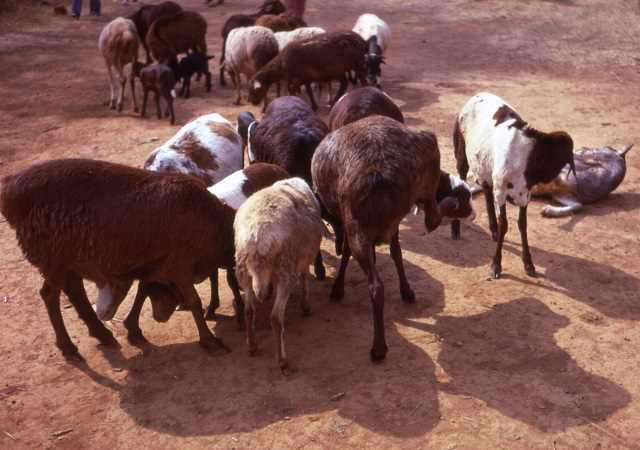

It is every farmers dream and desire to have a growing flock, all animals healthy and reproducing. However, infertilityin both Rams and Ewes could kill this dream. There are anumber of factors that cause this;
Ram factors
Brucella ovis infection results in epididiymitis and reduced sperm production
Prevention: Producers should buy rams only from B. ovis accredited flocks and run young rams separately from older or suspect rams in the off-season. Maintain good boundary fences to keep out strays. Check all rams for any signs of testicular and epididymal disease before joining and cull any suspect animals.
Testicular inflammation:
Several infections including Corynebacterium pseudotuberculosis (cheesy gland), Actinobacillus seminis and Histophilus somnican cause abscesses or inflammation that decrease sperm production.
Prevention: Rams should be vaccinated against cheesy gland and checked for testicular disease (see B. ovis above).
Fever/increase in body temperature
Any condition which causes a fever or rise in body temperature can damage sperm. As sperm production takes at least six weeks, infertility will continue until maturition of new, healthy sperm. Temporary infertility can result from:
- Shearing – increased susceptibility to heat stress during the summer, as well as infection of shearing cuts
- Dipping – apart from infection, dips may produce fever for a short period
- Droving – fast droving in hot weather can cause a significant rise in body temperature. Many breeders prefer to deliver the rams to the joining paddock by truck
- Flystrike – flystrike is invariably associated with fever. It is good practice to jet the polls of rams prior to joining
- Over-fat rams – overconditioned rams are more likely to be affected by hot weather and droving, and can get a high temperature when going straight into work
- Some drugs can suppress sperm production. Always check with a vet before giving medications.
Prevention: All management procedures such as shearing and dipping should be done well ahead of joining. The six-week sperm production period should also be considered in other aspects of pre-joining ram management, including for supplementary feeding and examination.
Ewe factors
Brucella ovis
Ewes infected with B. ovis at mating usually abort at a very early stage and return to oestrus. They are a source of the infection for rams during this time. Most ewes will not remain infected for more than two oestrus cycles but this can cause a prolonged lambing period. For those using a very short joining period it can result in very low pregnancy rates.
Clover disease:
Sheep grazing pastures with more than 30% of Trifolium species clovers early in the growing season may show reduced conception rates. Mature pastures are less risky.
Ewe condition:
Ewe condition at joining is strongly linked to flock fertility, ewe condition at lambing and lamb and dam survival. More than 85% of the ewe flock should be in body condition score 3 or higher at joining to maximise flock fertility.
 Contact Jaguza Support
Contact Jaguza Support